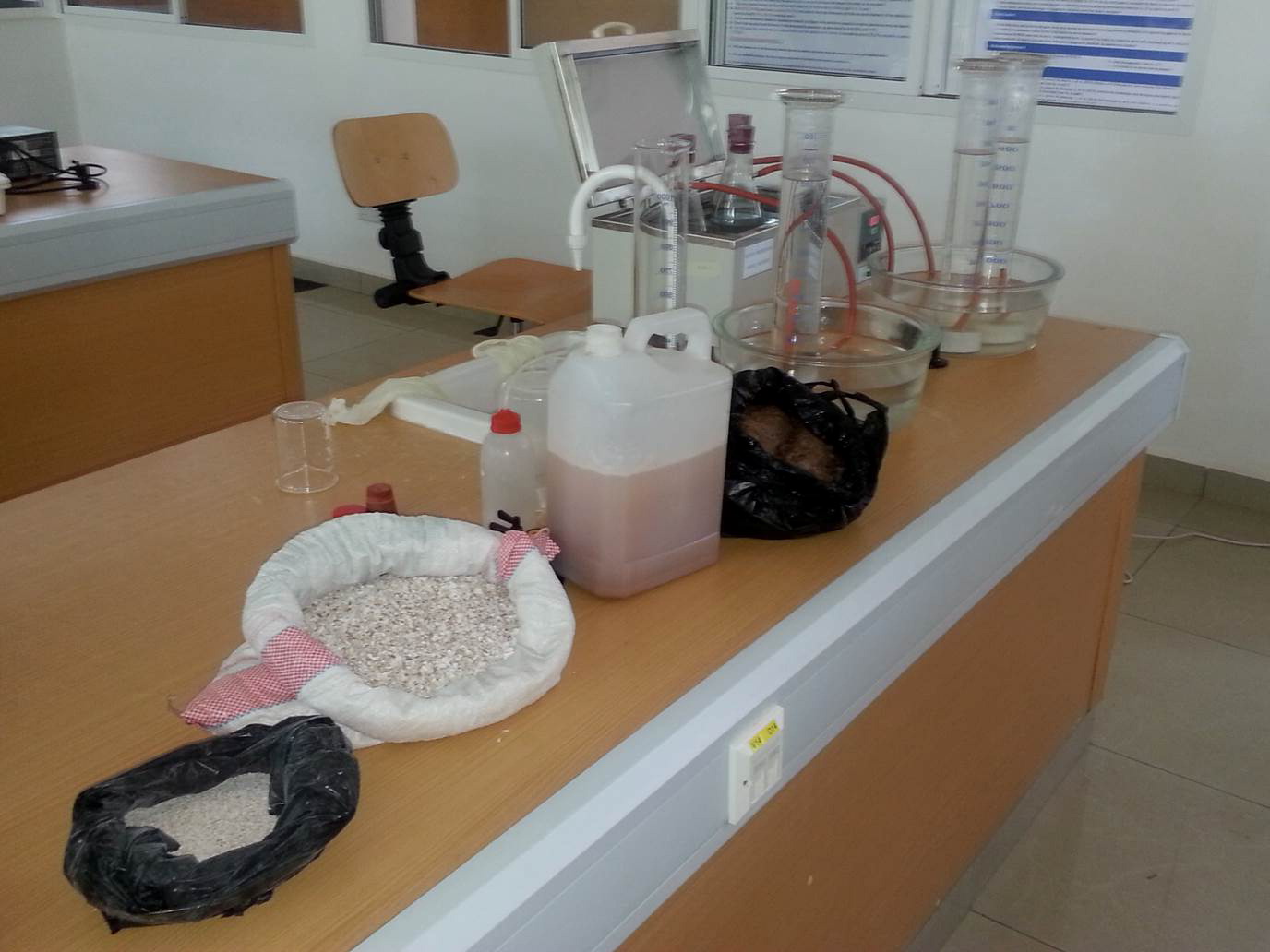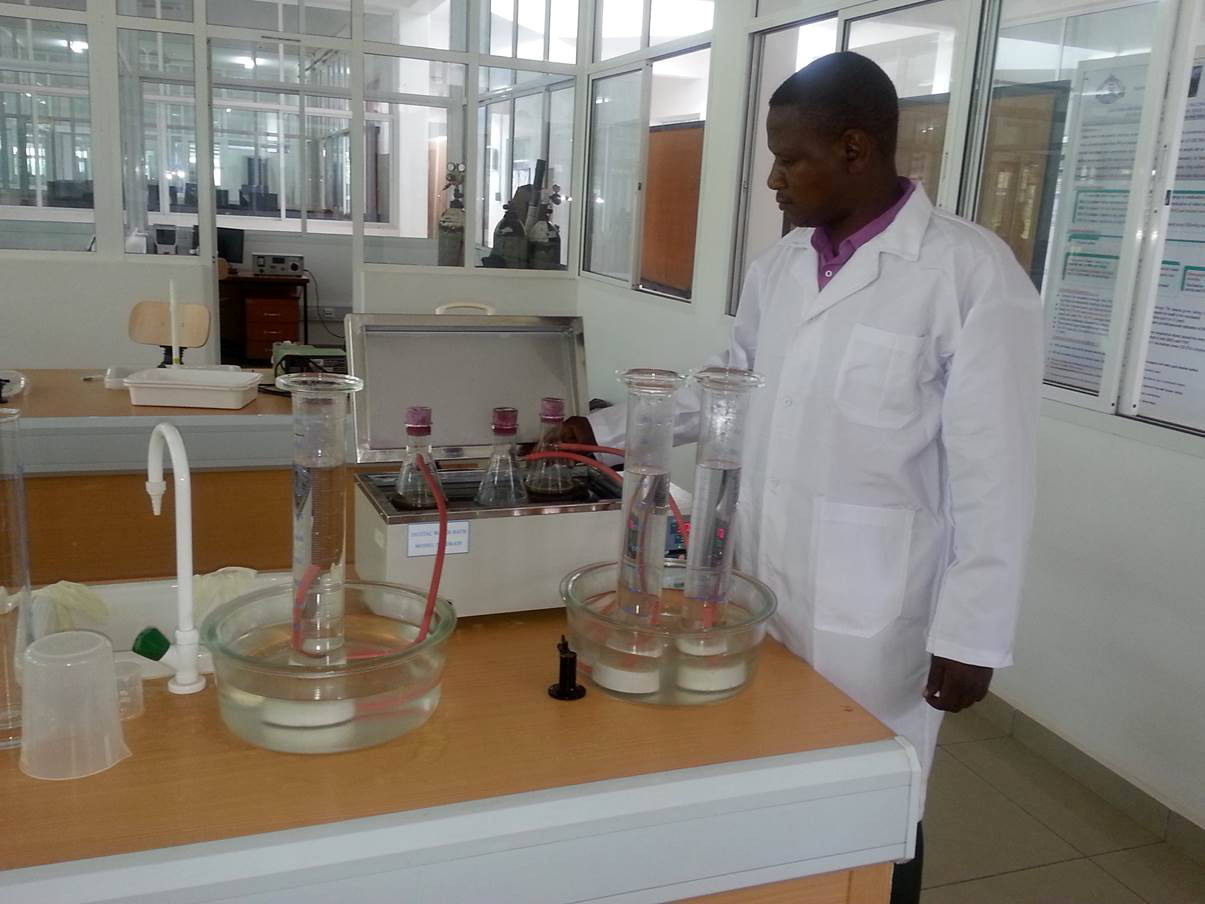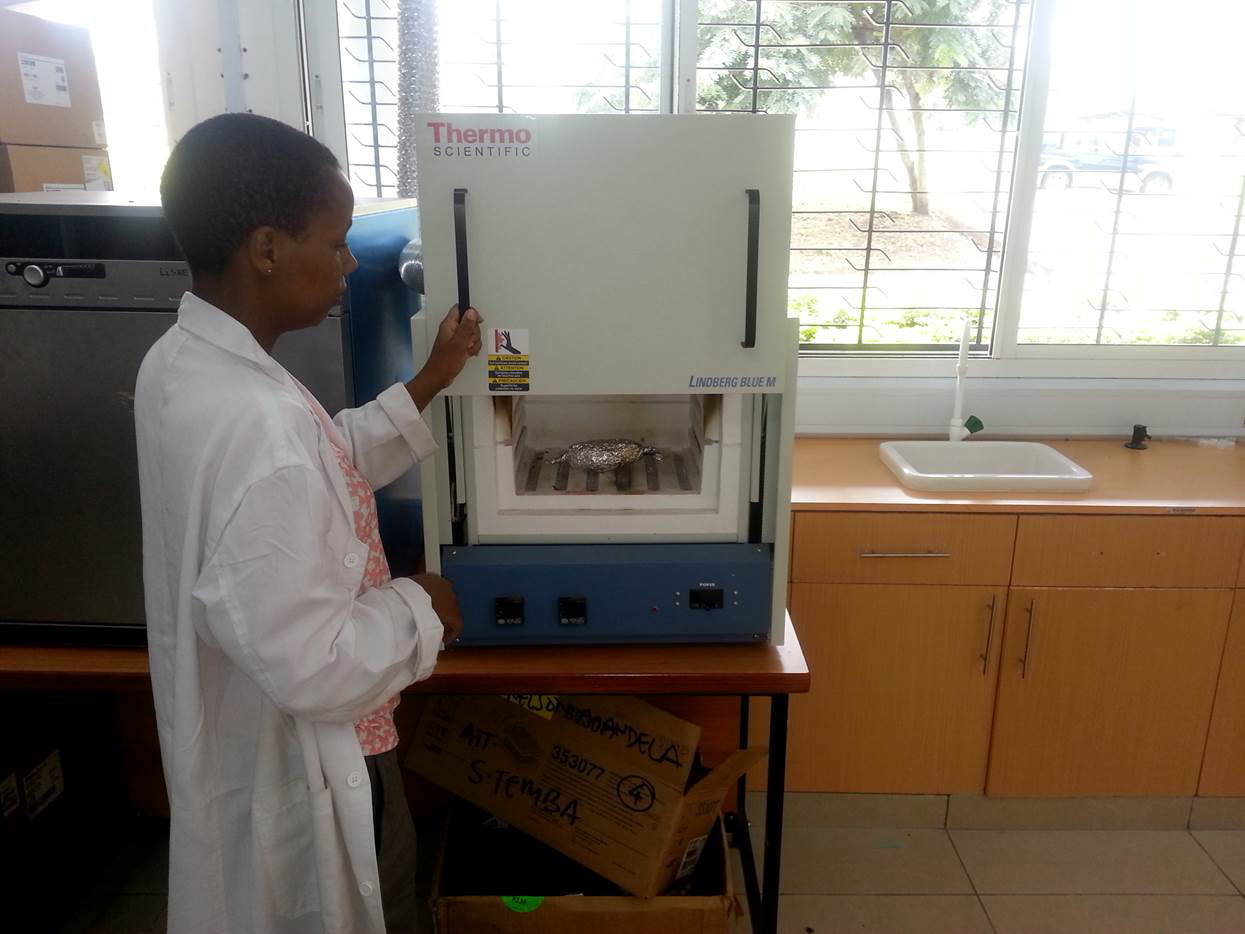Waste to renewable energy: biogas cleanup (upgrading) in Tanzania and KenyaPI: Cecil Kithongo King’ondu (
kithongo.king’ondu@nm-aist.ac.tz), with co-PIs Askwar Hilonga and Revocatus Machunda, Nelson Mandela African Institution of Science and Technology, and Owino Joseph Hazael Odero (
owinoj@gmail.com), South Eastern Kenya University
U.S. Partners: Puxian Gao and Steven Suib, University of Connecticut
Project dates: December 2014 - May 2017
The adoption of small and large-scale biogas production technology is on the increase in Africa, first, due to the need to supplement conventional power, which is inadequate and unreliable in the urban centers and missing in rural areas, and second, due to the growing environmental concerns associated with the use of fossil fuels. However, despite the growing biogas generation and utilization, there is no technology available for biogas cleanup. In Kenya and Tanzania, biogas is utilized as-produced, with no attempts to clean it, mostly by households, schools, flower farms, and other establishments. This is because the citizenry are either oblivious of the contaminants present in biogas and their detrimental effects on human health, the environment, and the infrastructure or there is no affordable technology available for biogas cleanup.
 |
| Biogas production set up. Photo courtesy of Dr. King'ondu |
This project is intended to create awareness among the general public of the contaminants in biogas and their effects on human health, the environment, and infrastructure; build capacity of academic staff and graduate students in biogas cleanup; and develop inexpensive, effective, and reliable technology for domestic and large-scale biogas cleanup. Biogas contains a plethora of toxic compounds such as siloxanes, hydrogen sulfide, carbonyl sulfide, carbon disulfide, dimethyl sulfides, and halogenated compounds. Hydrogen sulfide is the major contaminant in biogas and is highly toxic when inhaled. When uncleaned biogas is burnt for cooking or electricity, the sulfur compounds are converted to SOx gases, which corrode epithelial linings of human respiratory system. Additionally, SOx gases are associated with acid rain that wreaks havoc on our infrastructure. This project involves fundamental studies of biogas cleanup and development of a cheap and effective technique for biogas desulfurization at room temperature. The Nelson Mandela African Institution of Science and Technology (NM-AIST) and South Eastern University of Kenya (SEKU) will work on a tandem oxidative-adsorptive desulfurization process to remove both the H2S and more refractory organic sulfur compounds from biogas at room temperature. A cheap and effective biogas cleanup technique will significantly reduce emission of H2S and SOx gases to the environment and most importantly reduce the exposure of people, especially women, to the toxic H2S and SOx gases.
This work will help provide additional impetus for unraveling the great potential Tanzania and Kenya have in turning waste into renewable energy. It will also educate the general public, academic staff, and graduate students on risks posed by the use of biogas laden with sulfur and other noxious compounds. Undergraduate and graduate students at South Eastern Kenya University and graduate students at NM-AIST will be involved in this research and will actively participate in joint meetings. Chemical engineering/chemistry mini-courses in nano-science, catalysis, and adsorption will be developed for undergraduate and graduate students. Special attention will also be paid to outreach programs where the project will target diverse and underrepresented (in scientific research) groups such as primary and secondary students as well as the locals in the two cities: Arusha in Tanzania and Kitui in Kenya. The project will also endeavor to encourage the establishment of a special lab for students with disabilities. Most importantly, the development of a cheap and effective tandem oxidative-adsorptive desulfurization process will lay the foundation for deep desulfurization of biogas for fuel cells. Fuel cells have very low sulfur tolerance but their efficiency is unmatched by all other energy sources. A deep biogas cleanup technique will not only open doors for the adoption of fuel cells technology in Tanzania and Kenya but also reduce, significantly, the amount of natural gas used for fuel cells in developed countries like the United States, thereby reducing greenhouse gas emissions. The biogas cleanup technology developed will be transferred to households, schools, flower farms and stakeholders in the clean energy field. The U.S. collaborator will play an instrumental role during the scale-up stage of the process and technology transfer.
Final Summary of Project Activities
This project was intended to create awareness among the general public of the contaminants in biogas and their effects on human health, the environment, and infrastructure; build capacity of academic staff and graduate students in biogas cleanup; and develop inexpensive, effective, and reliable technology for domestic and large-scale biogas cleanup. The proposed filter was successfully developed and two papers published. Two addition papers have been accepted for publication in Elsevier (Materials Today Energy and Materials Today Proceedings).
The synthesis of manganese oxide and water hyancith derived carbon nanomaterials that showed good performance during screening tests was scaled -up and enough material for first generation prototype filters successfully prepared. In addition, first generation of the prototype filters were fabricated and their performance in removing hydrogen sulfide tested at Banana Investment Limited. The results obtained from these studies are promising.
Both prototype and pilot filters for tandem oxidative-adsorptive or adsorptive-oxidative sulfur removal were successfully fabricated with the help from the Center for Agricultural Mechanization and Rural Technology (CAMARTEC) and using filter cartridges, both locally made and purchased from the market. Upon rigorous testing of the the oxidative-adsorptive filters, the ones which had 2.5Fe-OMS-2 materials at the biogas inlet and hyancinth derived carbon materials at the biogas outlet side were found to be more effective in both sulfur and ammonia removal compared to their adsorptive-oxidative counterparts. Although, these filters gave better performance in terms of sulfur and ammonia removal, the the filters were severely deactivated by water in the form of moisture in the biogas. Deactivation by water was expected but the extend/degree of deactivation encountered was not anticipated in the initial proposed work. To circumvent this deactivation, the team explored strategies to reduce, if not eliminate, moisture in the biogas before it enters the filter.
 |  |
| Student working on the biogas set up. Photo courtesy of Dr. King'ondu | Student filtering synthesized manganese oxide. Photo courtesy of Dr. King'ondu |
The project created huge awareness of the need to clean up biogas in local, business, and academic communities. The interest for research around biogas clean up has heightened both at NM-AIST and SEKU and new proposals by graduate students and staff on new materials for biogas clean up have been developed as CAMARTEC is keen on fabricating portable and effective biogas filters from new materials to replace large biogas filters made of low activity materials for schools. The PI plans to develop new research projects together that can be carried out using the facilities developed under PEER. Through this partnership he will be able to supervise more graduate students and work closely with Ngorongoro conservation group in exploring the potential of the Ngorongoro crater volcanic ash in biogas clean up. Preliminary tests with these materials are promising.
PublicationsKivuyo, L. J., Njau, K. N., & King'ondu, C. K. (2017). Eggshells – assisted hydrolysis of banana pulp for biogas production. African Journal of Environmental Science and Technology , 11(1), 71-78.
https://doi.org/10.5897/AJEST2016.2155
Makauki, E., King’ondu, C.K. and Kibona, T.E. (2017) Hydrogen Sulfide and Ammonia Removal from Biogas Using Water Hyacinth-Derived Carbon Nanomaterials. African Journal of Environmental Science and Technology, 11, 375-383.
https://doi.org/10.5897/AJEST2016.2246 PEER Cycle 3 Grant Recipients 





